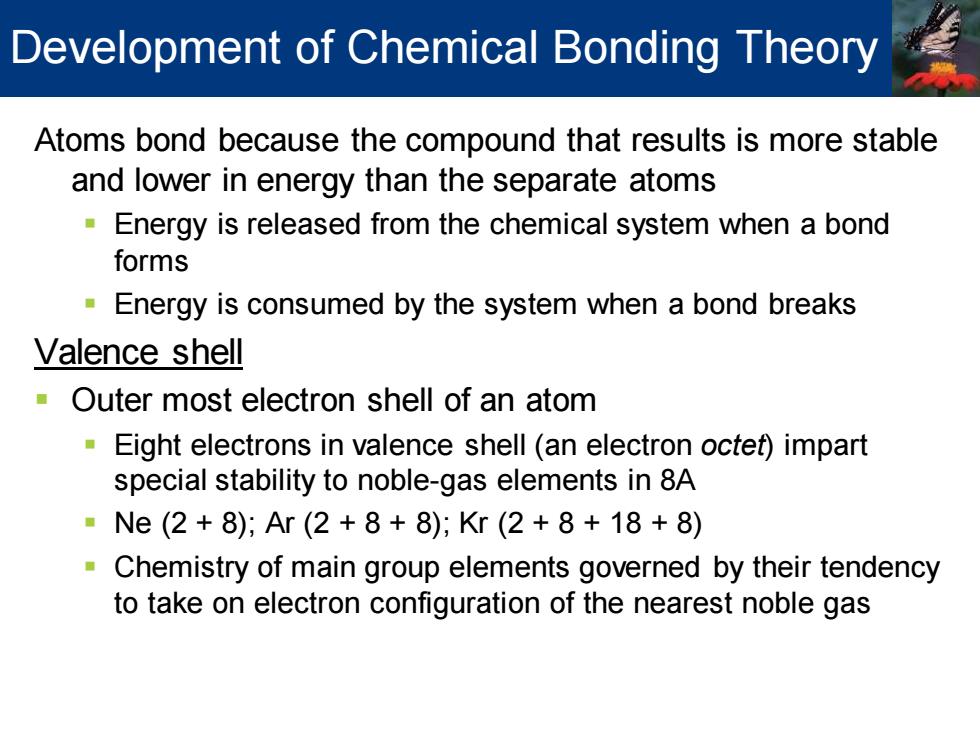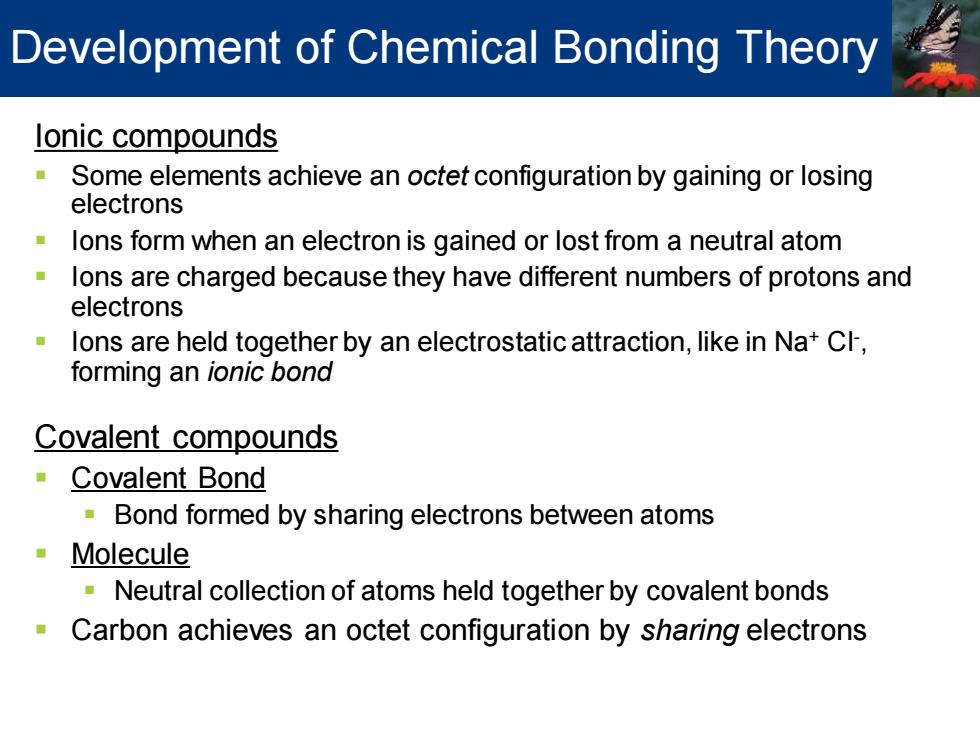
Development of Chemical Bonding Theory Atoms bond because the compound that results is more stable and lower in energy than the separate atoms Energy is released from the chemical system when a bond forms Energy is consumed by the system when a bond breaks Valence shell Outer most electron shell of an atom Eight electrons in valence shell(an electron octef)impart special stability to noble-gas elements in 8A ■Ne(2+8);Ar(2+8+8);Kr(2+8+18+8) Chemistry of main group elements governed by their tendency to take on electron configuration of the nearest noble gas
Atoms bond because the compound that results is more stable and lower in energy than the separate atoms ▪ Energy is released from the chemical system when a bond forms ▪ Energy is consumed by the system when a bond breaks Valence shell ▪ Outer most electron shell of an atom ▪ Eight electrons in valence shell (an electron octet) impart special stability to noble-gas elements in 8A ▪ Ne (2 + 8); Ar (2 + 8 + 8); Kr (2 + 8 + 18 + 8) ▪ Chemistry of main group elements governed by their tendency to take on electron configuration of the nearest noble gas Development of Chemical Bonding Theory

Development of Chemical Bonding Theory lonic compounds Some elements achieve an octet configuration by gaining or losing electrons lons form when an electron is gained or lost from a neutral atom lons are charged because they have different numbers of protons and electrons lons are held together by an electrostatic attraction,like in Na+Cl, forming an ionic bond Covalent compounds Covalent Bond Bond formed by sharing electrons between atoms Molecule Neutral collection of atoms held together by covalent bonds Carbon achieves an octet configuration by sharing electrons
Ionic compounds ▪ Some elements achieve an octet configuration by gaining or losing electrons ▪ Ions form when an electron is gained or lost from a neutral atom ▪ Ions are charged because they have different numbers of protons and electrons ▪ Ions are held together by an electrostatic attraction, like in Na+ Cl- , forming an ionic bond Covalent compounds ▪ Covalent Bond ▪ Bond formed by sharing electrons between atoms ▪ Molecule ▪ Neutral collection of atoms held together by covalent bonds ▪ Carbon achieves an octet configuration by sharing electrons Development of Chemical Bonding Theory